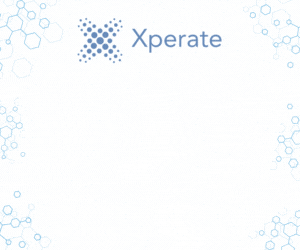Dynamics matters: How to deliver customer excellence in the legal industry – podcast by HSO
Dynamics Matters Podcast: Ep 61 – How to deliver customer excellence in the legal industry
With special guest Victoria Gregory, Industry Solution Architect & Practice Lead, HSO
- Learn more about the complex world of legal
- How to deliver a more personalised experience
- How relationship management solutions such as HSOs legal360 can help
Transcript
Welcome to episode 61 of the HSO Dynamics matters podcast.
Your regular sonic dive into the world of Microsoft technology related matters and much more besides.
I’m your host Michael Lonnon, and in this episode, I flew over to the windy city for a chat with HSOs Chicago based Head of Legal, Victoria Gregory.
Together we delved into the preposterously complex world of legal, for a chat about how relationship management solutions such as HSOs Legal-360 is making Legal less preposterously complex than it was before.
So, grab a brew, sit back, relax, and enjoy the show.
Michael Lonnon
Technology before people or people before technology?
Victoria Gregory
People before technology.
Michael Lonnon
I listened to one of your videos recently Victoria, and in it, you said something about software implementation is 5% about the software and 95% of it is about change management, which is really the people side. But what makes you think that or where did you come up with that, given your background?
Victoria Gregory
From doing implementations and seeing how people react to introducing something new. People generally resist change; they don’t like change so that’s why the focus on change management is so important. New software can be revolutionary, but you’ve got to get people to adopt it and then also continue that retention of using something. So that’s why for me, the change management piece is so much more critical than just the software.
Michael Lonnon
We see that all the time. And lots of people I talk to iterate the same thing. I will ask you some more specific questions, but I want to ask this first, in your experience, how do you get people buying into the things that you’re doing from the technology point of view?
Victoria Gregory
It goes back to the old marketing theory of what’s in it for me. The why should that person care and that’s something that I’ve tried to do during my time in house at law firms, is look at people and the roles they play, and then tailor communications to that role. Sometimes you have to take the extra time with people one on one to understand what it is they’re resistant, why they’re concerned and that can be a way to get feedback to improve a system as well.
Michael Lonnon
That’s a lot about relationship building, isn’t it and that’s a lot of where your background has come from in the legal sector is implementing relationship management technology. What kind of challenges is that addressing, particularly in the legal sector?
Victoria Gregory
That’s what the legal industry is all about is relationships. It’s the relationships lawyers have with their clients, maintaining those relationships, keeping those relationships going is what keeps the business coming in and that’s why I was very interested in early in my career around CRM, technology, client relationship management. But historically, it was only being used within law firms for mailing lists and sending out mailings. I remember back in the day of even using a mailing house to send out hard copies of things and it struck me, we’ve got this system, it’s supposed to be focused on relationship management, but we’re only using it for marketing, for mailings and events, tracking event RSVPs and attendance when we could be tracking all this information about who knows who, why do they know them, how well do they know them. And then what’s that person’s role in their organisation, are they the decision maker, do they hold a budget, all those things that tie into how a law firm makes money. So, the challenges with introducing technology to do that is it can feel like you’re taking away that personal element. But what you’re actually doing is adding efficiencies and technology that can identify gaps. So being able to pinpoint this is a key client, this is somebody that’s important, but they’ve stopped attending our events, they’ve stopped opening the things that we send them, nobody’s communicated with them in the last 30 days. Identifying that and highlighting somebody should reach out to this person.
Learn more about our Solutions like legal360
Built on the industry-leading Microsoft cloud platform, legal360 is the most comprehensive marketing, business development, ERM, and relationship intelligence suite for law firms
BECOME THE MODERN LAW FIRM OF THE FUTURE WITH LEGAL360
Michael Lonnon
It’s understanding those individuals how there engaging with you, and it allows you to take an action that depends on what they’ve done before, you’re understanding more about them.
Victoria Gregory
One of the things I’ve tried to explain in more real-life terms when I’ve done training sessions is I once went to my hairdressers, and sat down, and there was a black coffee with two sugars in front of me. Now, my hairdresser didn’t remember that – that’s in a computer somewhere and he looks at that before his clients come in. But it’s that added touch that makes sure I mattered to them. They care, but that’s client relationship management. It’s the same with banks, the way you get tailored communications from your bank, your bank manager doesn’t know that, it’s in a computer system somewhere.
Michael Lonnon
Do you think a lot of legal firms or professional service firms are resistant to that change because they think you are taking that relationship element away?
Victoria Gregory
I think there’s a resistance to change full stop. I think it is the sense that it takes away personalisation. The sense that it could dilute the relationship they have. It’s less so now than when I started 20 years ago in my career; a concern of I don’t want to share my contact information because somebody else is going to call my clients. That’s not how lawyers operate or work. So that was something to say, you’re not giving anything up, what you’re doing is identifying to other people that you have a relationship with that person.
Michael Lonnon
When you put the solution in legal 360, when you were working on the client side, what positive changes did you see as a result of the solution going in?
Victoria Gregory
One of the key things was identifying contacts and relationships that people didn’t know existed. So, Partner A knows a contact and they found out that five other partners know the same contact. It’s the mindset of, only I know this person, but actually lots of other people do within the firm. So, you can be more strategic in the way you communicate with that person. You can invite other partners along to any meetings that can help with cross selling. If it’s a client of one particular practice of the law firm, you could cross sell another practice area into that person’s organisation, there’s lots of benefits to that. One of the key benefits that I saw, being on the staff side of the business, was the reduction in resources needed for some of the pretty straightforward things and that’s around like data management, not needing to have lots and lots of data stewards, who are day in day looking at contact data changes and approving or rejecting them or having to go and find out information as to whether this was accurate or not. The legal 360 system has been developed to reduce those resources that are needed without taking away updates. It’s just now done more passively. There’s not a need for lawyers to be spending a lot of time doing anything. Their time should be spent with clients, and billing time. Then a reduction in resources across firms and across industries so you don’t have the luxury of people that can spend hours and hours combing through data. You need technology to be able to do that for you.
Michael Lonnon
When you put legal 360 in, how quick was the mindset shift from where they were, and where they’ve always been managing the data in a particular siloed way to using this system to build those relationships? How quick was that mind shift change?
Victoria Gregory
So that varied firm to firm. And it depends on the culture of the firm. One of the things I did was identify people within the firm who would be champions from the get-go, and then use their voices to spread the message, because you’re more likely to listen to somebody who’s a pier who believes in something and can explain the benefits directly to your level. But I would say with legal 360, once it’s implemented, and once it’s up and running, the change is evident rapidly. Certainly, with the relationship 360 Power App, which is our enterprise relationship management feature. Once that’s up and running, you can have that bringing in historical data up to a year. So, on day one, you’ve got 12 months’ worth of relationship information, relationship value scores, how many emails in-out, how many appointments have been had with individuals, which is huge, but the lift for the lawyers is zero. They don’t have to do anything; they’ve suddenly have information at their fingertips without having to spend hours doing anything. It really is a game changer.
Michael Lonnon
Somebody has recognised that they’ve got a problem with matching information, or they’ve got a problem with siloed data, or they just can’t see how customer A has engaged with the firm over x period of time.
Victoria Gregory
Again, at the core of that is this relationships piece, who do they know, how well do I know them and who in the firm knows them and using that relationships 360, using data that already exists. So, the lawyers are just going about their daily business, emailing contacts, having appointments, having meetings, and all of that data is extrapolated, and given a scoring and a value so you can see who has the strongest relationship without anybody having to do anything. And that’s what relationships 360 can do. So, I would say for firms that are looking to adopt or change their CRM platform is to identify some of those key areas that are critical to the firm. Then it’s saying how can this CRM platform help us with that, rather than the other way around. It’s not square pegs into round holes. It’s one of the things I love about legal 360 because it is customisable, and the way HSO work with clients to customise it, it’s not an out of the box product. It’s tailored for the law firm, which is so important for the success and user adoption. Simple things like being able to change the names of fields to fit the nomenclature of that firm is critical.
Summary
The key to success in Professional Services, in particular, is relationship management. And by opening up the little black book and embracing digital solutions like Legal-360, this is now easier.
Legal-360 pulls together historical engagement data making it easier to see past interactions and so prioritise where you spend your time.
It also brings together insight from other parts of the business so you can quickly spot opportunities to up-sell or cross-sell other services.
And the good new is this insight is just there – you don’t need to spend hours collating it. As Victoria says: it’s a game-changer.
Thanks for listening, until next time, take care of yourselves.



